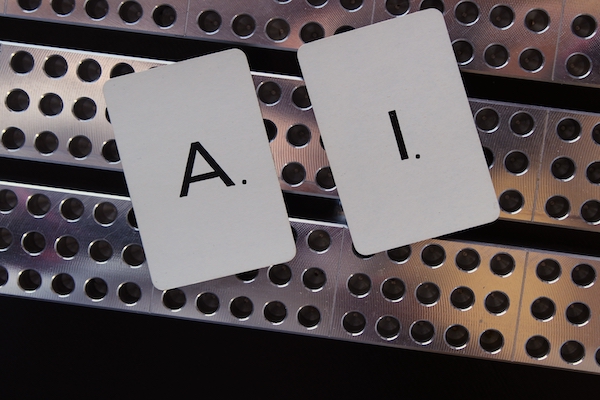The beginnings of the artificial intelligence world were represented by the teasings of the science fiction genre, that imagined robots that had similar capacities of humans, like the Tin man from the famous Wizard of Oz, in the first half of the 20th century. From there on, it was a world of endless possibilities.
It wasn’t long until actual scientists began to study this field. In the 1950s we already had a whole generation that was more than familiar with the concept of artificial intelligence (AI), no matter their specialty: mathematicians, scientists and even philosophers. From this gathering we point out Alan Turing, a young polymath who connected the dots between human and machine problem solving. He considered that if humans used available information and reason to go through this process, machines should be able to do the same.
This simple statement began the discussion on how to build AI and how to test it.

The Early Beginnings
Sadly, the idea was a bit too early for its time. Around the 1950s computers were not advanced enough for the complexity that AI brought into the game. The main issue was that they couldn’t store commands, they would understand the tasks that were given and execute them, but wouldn’t remember them after. On top of this, computers were still kind of rare. They would be found only in distinguished universities or big companies and renting them was a fortune. Therefore, the first and big step that had to be overcome was convincing the right people that AI was a secure possibility.
At the Dartmouth Summer Research Project on Artificial Intelligence in 1956, the miracle happened. John McCarthy and Marvin Minsky hosted the conference and discussed all the possibilities with top researchers from many fields, who agreed that AI wasn’t just a fantasy anymore.
The Impressive Evolution
From there on, anything was possible. First, the computers evolved enough to support the whole process, then the principles of AI were applied to actual situations. The first major breakthrough was in 1997, when Gary Kasparov, a world chess champion, was defeated by a chess playing program. It wasn’t long until such programs also tackled the casino world, defeating even the best players. Another great evolution was represented by the first speech recognition software, implemented on Windows, and the first robot that could not only recognize, but also display emotion.
No Boundaries Regarding Industries
Soon enough, the phenomenon spread through various, day-to-day industries that could benefit from such technology: business, marketing, banking, even entertainment. Not necessarily slowly, but steady, AI began to be a part of our simple lives too. Whether we are talking about the machines that direct and guide us when we contact companies, or serious missions that regard the integrity of humans, there is almost no present field that AI couldn’t make better, some way or another.
Surgeries and Prosthetics
Doctors are now aided with much more precision and control, sometimes crucial to the outcome of a very sensitive surgery, thanks to surgical robots. Therefore, patients not only have a higher survival and recovery rate, but also their necessary hospital stay period shortens, thus resulting in higher efficiency in doctors and hospitals in general.
Paralyzed patients also benefit from the great wonders of today’s technology evolution. If a scenario where robotic arms could be controlled through a chip implanted in the brain used to sound like a Sci-Fi invention, today AI makes it possible. This way, patients can not only regain mobility, but also sense of touch.
Helping the Environment
Most likely we all know by now the importance of bees in our environment. Without them, crop pollination couldn’t happen and famine would start creeping through the cracks. Sadly, they are in danger because of all the pesticides released and the diseases they are prone to and the fact that their populations are not exactly what we would call numerous, the existence of their services begins to be at risk. In order to overcome this issue, a robot bee in the form of a drone has been created to replicate pollination, through AI, a camera with high resolution and GPS.
Speaking of endangered species, apps like eBirds, or iNaturalists have been developed in order to help with identification, tracking and protection of various species, through the collection of information about populations, ecosystems and migration from many specialists from several departments.
These are just a couple of the recent appliances of AI in our lives, but remember that the possibilities are almost endless. It is incredible to observe the fast evolution, especially considering all the benefits our society has, which might be overlooked. Looking forward to the next big breakthroughs!




